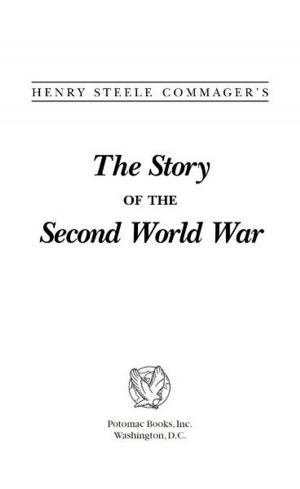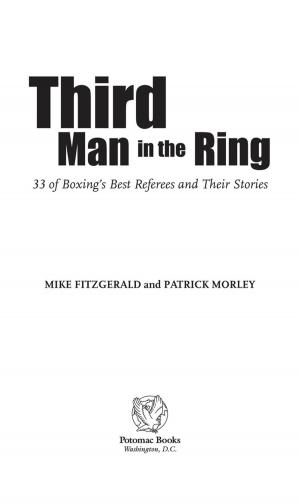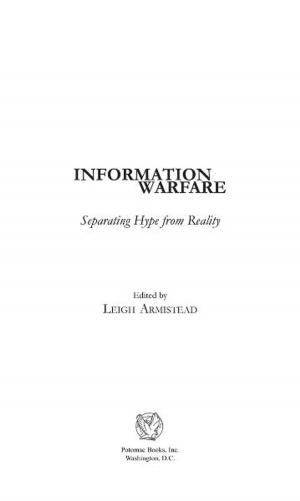JFK Assassination Logic
Nonfiction, History, Americas, United States, 20th Century, Social & Cultural Studies, Political Science, Government| Author: | John McAdams | ISBN: | 9781597975797 |
| Publisher: | Potomac Books Inc. | Publication: | September 30, 2011 |
| Imprint: | Potomac Books Inc. | Language: | English |
| Author: | John McAdams |
| ISBN: | 9781597975797 |
| Publisher: | Potomac Books Inc. |
| Publication: | September 30, 2011 |
| Imprint: | Potomac Books Inc. |
| Language: | English |
The mother of all conspiracy theories is about the assassination of President John F. Kennedy. Many of its elements have become part of American folklore: the single bullet, the Grassy Knoll shooter, and the mysterious deaths of interested parties.
JFK Assassination Logic shows how to approach such conspiracy claims. Studying Lee Harvey Oswalds character and personality, for example, doesnt help determine whether he alone shot the president, and our opinion of bureaucrats can often cloud our judgments. How people view the JFK assassination can be a model for how to (or perhaps how not to) evaluate other conspiracy theories, including those generally considered dubioussuch as President Roosevelts foreknowledge of Pearl Harbor, desert staging of the 1969 moon landing, and U.S. government involvement in 9/11as well as those based on fact, such as Watergate.
John McAdams addresses not only conspiracy theories, but also how to think, reason, and judge the evidence in these cases. How do we evaluate eyewitness testimony? How can there be too much evidence of a conspiracy? How do we determine whether suspicious people are really culpable? By putting the JFK assassination under the microscope, McAdams provides a blueprint for understanding how conspiracy theories arise and how to judge the evidence.
This book puts the reader into a mass of contradictory evidence and presents an intriguing puzzle to be solved. The solution, in each case, involves using intellectual tools. Eyewitness testimony, the notion of coincidence, selectivity in the use of evidence, how to choose between contradictory pieces of evidence, the need for evidence to fit a coherent theory, how government works, and basic principles of social theorizingall provide the elements of how to judge not only the JFK conspiracy but all conspiracies.
JFK Assassination Logic shows how to approach such conspiracy claims. Studying Lee Harvey Oswalds character and personality, for example, doesnt help determine whether he alone shot the president, and our opinion of bureaucrats can often cloud our judgments. How people view the JFK assassination can be a model for how to (or perhaps how not to) evaluate other conspiracy theories, including those generally considered dubioussuch as President Roosevelts foreknowledge of Pearl Harbor, desert staging of the 1969 moon landing, and U.S. government involvement in 9/11as well as those based on fact, such as Watergate.
John McAdams addresses not only conspiracy theories, but also how to think, reason, and judge the evidence in these cases. How do we evaluate eyewitness testimony? How can there be too much evidence of a conspiracy? How do we determine whether suspicious people are really culpable? By putting the JFK assassination under the microscope, McAdams provides a blueprint for understanding how conspiracy theories arise and how to judge the evidence.
This book puts the reader into a mass of contradictory evidence and presents an intriguing puzzle to be solved. The solution, in each case, involves using intellectual tools. Eyewitness testimony, the notion of coincidence, selectivity in the use of evidence, how to choose between contradictory pieces of evidence, the need for evidence to fit a coherent theory, how government works, and basic principles of social theorizingall provide the elements of how to judge not only the JFK conspiracy but all conspiracies.
The mother of all conspiracy theories is about the assassination of President John F. Kennedy. Many of its elements have become part of American folklore: the single bullet, the Grassy Knoll shooter, and the mysterious deaths of interested parties.
JFK Assassination Logic shows how to approach such conspiracy claims. Studying Lee Harvey Oswalds character and personality, for example, doesnt help determine whether he alone shot the president, and our opinion of bureaucrats can often cloud our judgments. How people view the JFK assassination can be a model for how to (or perhaps how not to) evaluate other conspiracy theories, including those generally considered dubioussuch as President Roosevelts foreknowledge of Pearl Harbor, desert staging of the 1969 moon landing, and U.S. government involvement in 9/11as well as those based on fact, such as Watergate.
John McAdams addresses not only conspiracy theories, but also how to think, reason, and judge the evidence in these cases. How do we evaluate eyewitness testimony? How can there be too much evidence of a conspiracy? How do we determine whether suspicious people are really culpable? By putting the JFK assassination under the microscope, McAdams provides a blueprint for understanding how conspiracy theories arise and how to judge the evidence.
This book puts the reader into a mass of contradictory evidence and presents an intriguing puzzle to be solved. The solution, in each case, involves using intellectual tools. Eyewitness testimony, the notion of coincidence, selectivity in the use of evidence, how to choose between contradictory pieces of evidence, the need for evidence to fit a coherent theory, how government works, and basic principles of social theorizingall provide the elements of how to judge not only the JFK conspiracy but all conspiracies.
JFK Assassination Logic shows how to approach such conspiracy claims. Studying Lee Harvey Oswalds character and personality, for example, doesnt help determine whether he alone shot the president, and our opinion of bureaucrats can often cloud our judgments. How people view the JFK assassination can be a model for how to (or perhaps how not to) evaluate other conspiracy theories, including those generally considered dubioussuch as President Roosevelts foreknowledge of Pearl Harbor, desert staging of the 1969 moon landing, and U.S. government involvement in 9/11as well as those based on fact, such as Watergate.
John McAdams addresses not only conspiracy theories, but also how to think, reason, and judge the evidence in these cases. How do we evaluate eyewitness testimony? How can there be too much evidence of a conspiracy? How do we determine whether suspicious people are really culpable? By putting the JFK assassination under the microscope, McAdams provides a blueprint for understanding how conspiracy theories arise and how to judge the evidence.
This book puts the reader into a mass of contradictory evidence and presents an intriguing puzzle to be solved. The solution, in each case, involves using intellectual tools. Eyewitness testimony, the notion of coincidence, selectivity in the use of evidence, how to choose between contradictory pieces of evidence, the need for evidence to fit a coherent theory, how government works, and basic principles of social theorizingall provide the elements of how to judge not only the JFK conspiracy but all conspiracies.















